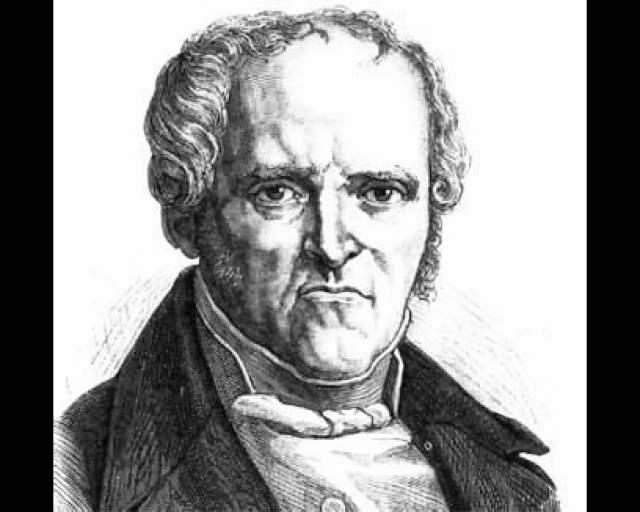On August 22–23, 1843, the Fourier Society of the City of Rochester held its first convention at Monroe Hall, a meeting space on an upper floor of the Kearney and Doyle Building on the corner of Main and Water Streets. The event had been promoted by Horace Greeley’s New-York Tribune, which followed Fourierist developments with interest. A lead speaker at the event was Albert Brisbane of New York City, the foremost American advocate for Fourierism. (His persistence and personal magnetism had sparked Greeley’s fascination with Fourierism.) Brisbane’s aim was that the convention would spur the creation of a single large regional intentional community, or phalanx, in west-central New York.
Fourierist teachings advocated for communities organized into “phalanxes” freed from private ownership in order to provide economic comfort, social justice, and individual fulfillment.
Several hundred delegates attended the convention, hailing from six counties. Rochester Quaker abolitionist and businessman Benjamin Fish, already president of the local Fourier Society, was elected president of the Ontario Phalanx. The new entity adopted “Articles of Association” modeled on those of the North American Phalanx, which had been launched earlier that year near Red Bank, New Jersey. (The North American Phalanx would operate until 1856, making it the longest-lived of the Fourierist communities established around America in the 1840s.) The “Articles” were very specific about parliamentary matters, but said little about essential Fourierist doctrines of groups, series, and the like.
Later Rochester Fourierist literature would veer yet further from Fourierist orthodoxy, envisioning association (that is, living and working in Fourierist communes) less as a boon to the whole human community than as a method of uplifting the working class through collective action at the expense of capital.
Fourierism had a brief and turbulent future in the region. Only weeks later, rogue promoter John Anderson Collins would launch his all-freethinking Fourierist Utopian commune at Skaneateles, shattering hopes for a single region-wide community. The Ontario Phalanx would split into five factions. Each would launch a small, under-capitalized, and ultimately doomed commune. The faction led by Benjamin Fish formed the Sodus Bay Phalanx at what is now Alton, New York. Plagued by both financial crises and conflicts between the commune’s religious and freethinking members, the Sodus Bay Phalanx would endure for only about two years. Additional communities that would spring from this convention—and quickly fail—were founded at Clarkson, Mixville, North Bloomfield, and Ontario.
The site falls within the sprawling footprint of the Rochester Riverside Convention Center (erected 1980). Main and Water Streets no longer intersect, as Water Street was removed between Andrews Street (four blocks north) and Main Street in order to create a deeper continuous riverside space for new construction. (See Image 2, below.) The Monroe Hall site now occupies a point near the center of the Convention Center’s south-facing facade.

Convention Center
View of the south-facing facade of Rochester Riverfront Convention Center, seen from across Main Street, looking north. If Water Street had not been eliminated south of Andrews Street (see map, next image), the intersection of Main and Water would occupy the center of the image, cutting the Convention Center's south-facing facade roughly in half.

Monroe Hall location
This 1930 map still shows Water Street running continuously, parallel to the Genesee River. The yellow arrow indicates the corner of Main and Water Streets. It is not known on which corner the Kearney and Doyle Building, which contained Monroe Hall, stood.
The blue arrow at top shows the corner of Water and Andrews Streets, where Water Street now ends.
Associated Causes
Those Involved
Associated Historical Events
First Convention of the Fourier Society of Rochester
August 22–23, 1843
Rise and Fall of Sodus Bay Phalanx
1843–1846




